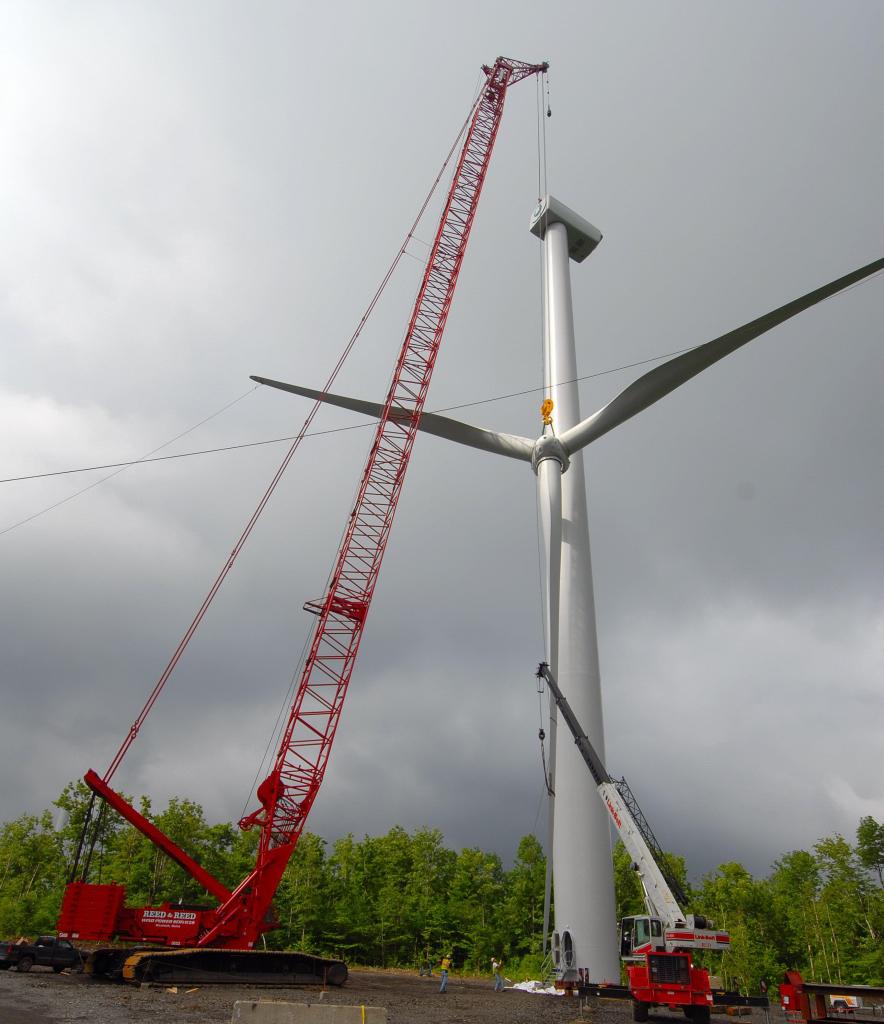BRUNSWICK – There’s an old saying that if you say something that’s not true often enough, people will start to believe it. Unfortunately, that seems to be happening in Maine with wind power.
Opponents write letters to the editor and have press conferences alleging dark conspiracies and using scary words like destruction, vibration, industrial (this is a favorite), and even a new ”disease.”
I haven’t heard them blame the demise of the Red Sox last fall on windmills yet, but it could come any day.
SETTING THINGS STRAIGHT
So, here’s a shot at setting the record straight on a few of the myths now circulating:
• Myth 1. Building wind turbines ”destroys” the mountains. Jonathan Carter recently made a big deal about a project ”removing” fill from the mountain.
Yes, dirt and rock will be moved from one place to another in building the gravel access road and foundations.
But the amount of material actually removed from the mountain and taken somewhere else: Zero.
The foundation of a modern wind turbine is actually surprisingly small – a circle of concrete 24 feet across and 5 feet deep. That’s about the size of the cellar hole of a really small house.
To see the real deal, Carter should go to West Virginia, where they are cutting mountains away altogether to get at the coal. Now that’s destruction.
• Myth 2. The sound can be heard for miles. No. If your house is too close to the turbines, just like if you are too close to a highway, airport, or college dorm on a Saturday night, you will hear them. It’s all about the setbacks.
Our law is pretty restrictive on this, but several of the early wind projects in Maine got waivers from the noise limits and there are neighbors who are hearing them and are pretty upset. But allow sufficient setbacks – our experience indicates that around half a mile is about right – and sound will very rarely, if ever, be a problem. Hear them from ”miles”? Never.
• Myth 3. The wind power law passed in 2007 was snuck through the Legislature, came from a task force stacked with wind power advocates, and somehow cuts the people out of the process.
First, as I can attest from hard experience, nothing sneaks through the Maine Legislature – if they pass something (unanimously in this case) it’s pretty sure they think it’s a good idea. As for that shady task force (which held 12 public meetings), there were 17 members, only two of whom had any connection with the wind industry.
The other 15 were legislators, private citizens and representatives of groups like the Appalachian Mountain Club, Maine Audubon and the Natural Resources Council (these last three having been staunch opponents of the Reddington wind project rejected by the state in 2006).
And as to people being somehow disenfranchised, our project in Roxbury was the subject of 27 public meetings, two full town meetings (where the citizens voted in favor of the project both times) and three public meetings with the Department of Environmental Protection present. It’s hard to imagine a more public process.
• Myth 4. Wind turbines will make you sick. If your house is too close (as mentioned above), the sound can be annoying, which can result in symptoms like irritability and anxiety (exactly as if you were too close to an airport).
But if you’re a reasonable distance away, the suggestion that the turning blades send forth some kind of mysterious and dangerous emanations has no scientific support whatsoever.
In fact, every independent analysis of this issue (in Ohio, Wisconsin, New Zealand, Massachusetts, and our own Maine Center for Disease Control, among others) has concluded that there is no evidence of any health effects beyond those associated with the annoyance of being too close to any sound source.
There are other charges, so for more information on things like lights, shadow flicker, birds or wildlife, check out www.recordhillwind.com/faq. (If you want to see how terrifying windmills are to animals, go to Google images for ”wind turbines cows”).
A DANGEROUS DEPENDENCE
The fact is that Maine is dangerously dependent upon fossil fuels – 55 percent of our electricity and over 85 percent of our total energy comes from oil and gas – 100 percent of which is imported, often from people who don’t like us.
To me, it just makes sense to tap an energy source we have in abundance in-state, not as the whole answer, but at least as a step in the right direction.
Talking about climate change and energy independence won’t get it done; it will take real action – and maybe even a little change.
Send questions/comments to the editors.



Comments are no longer available on this story